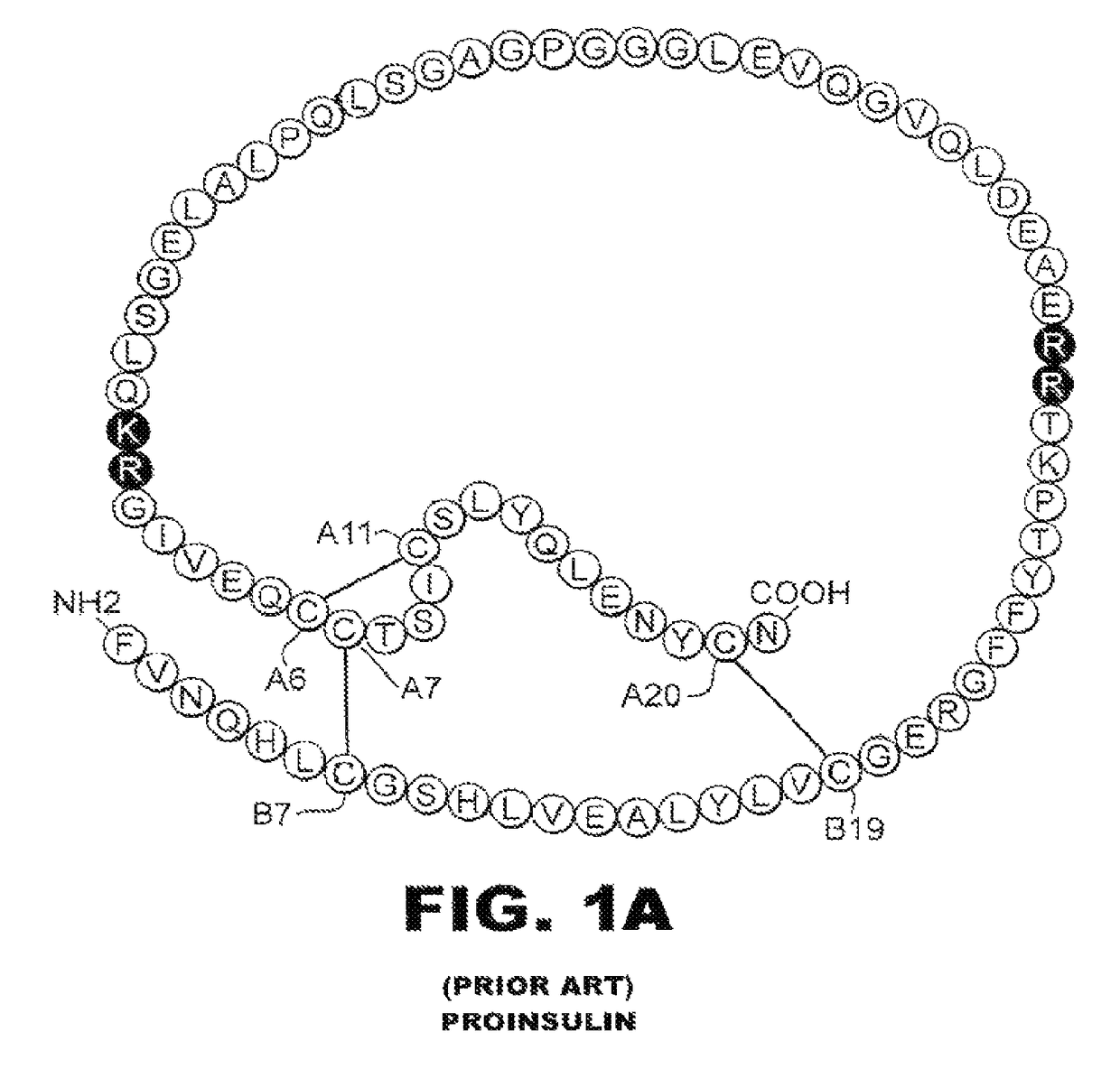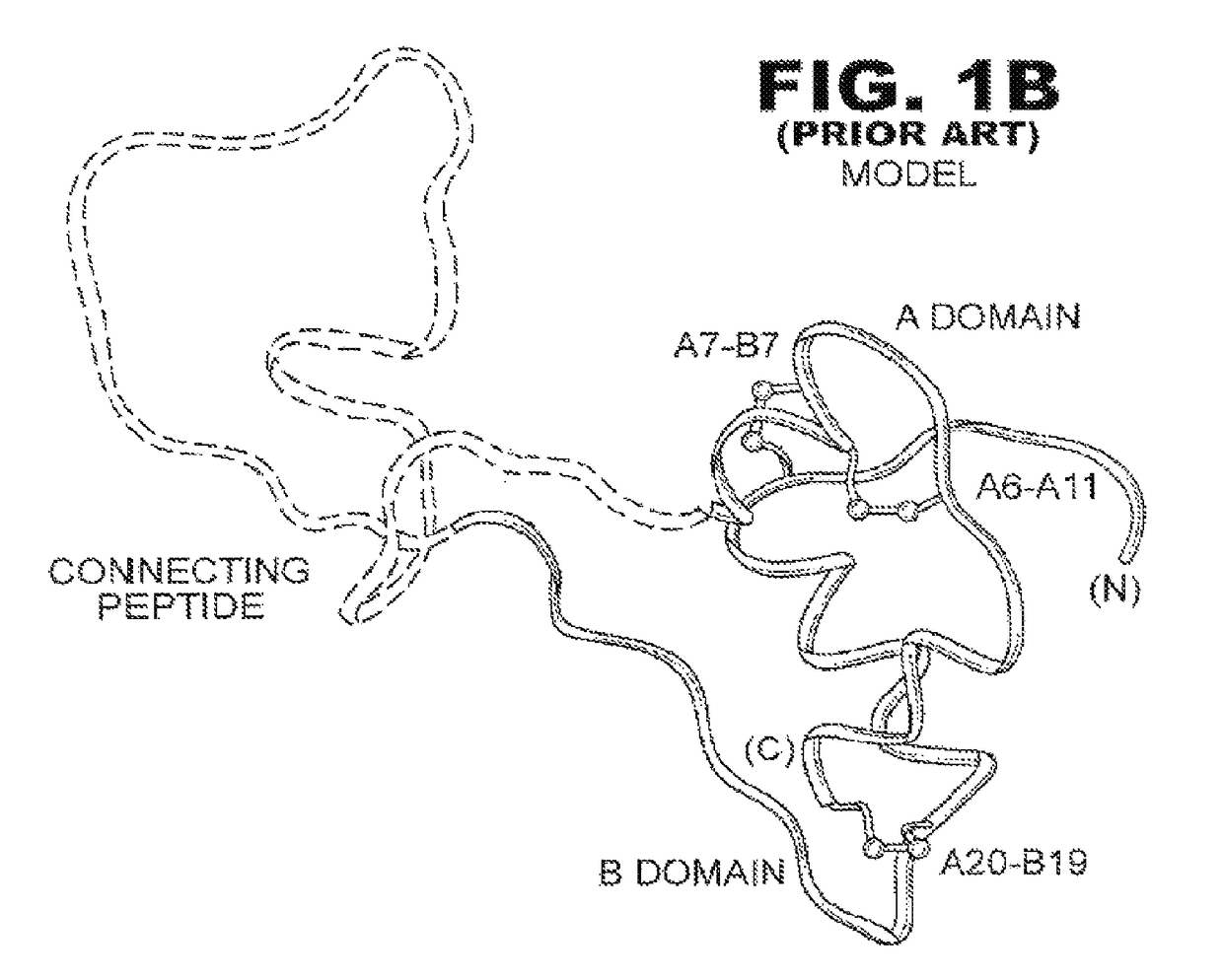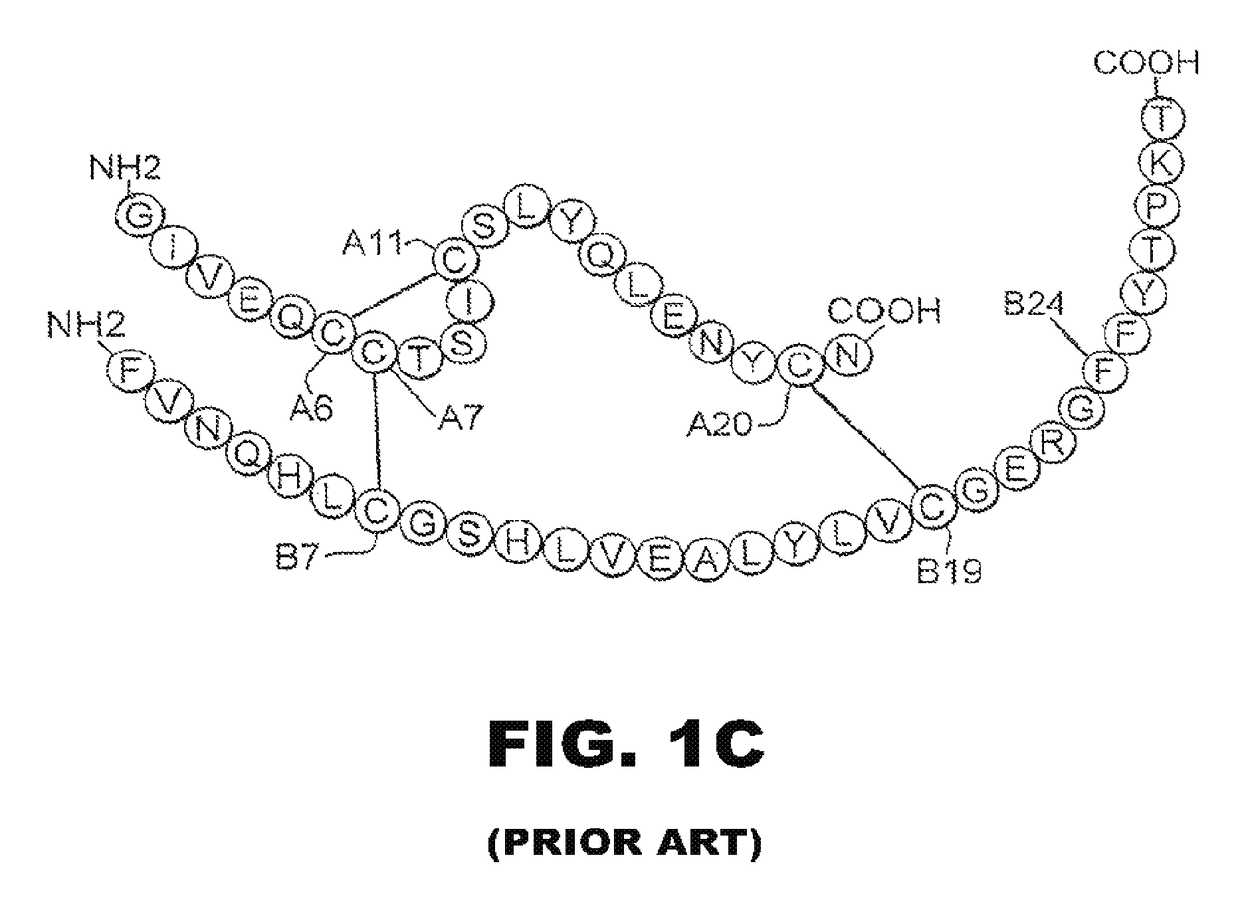O-linked carbohydrate-modified insulin analogues
a technology of insulin and o-linked carbohydrate, which is applied in the field of polypeptide hormone analogues, can solve the problems of further impairment and limited preparation methods, and achieve the effects of accelerating absorption, rapid disassembly of hexamers, and enhancing resistance to fibrillation
- Summary
- Abstract
- Description
- Claims
- Application Information
AI Technical Summary
Benefits of technology
Problems solved by technology
Method used
Image
Examples
Embodiment Construction
[0038]The present invention is directed toward an insulin analogue that provides resistance to fibrillation above room temperature due to site-specific modification of the C-terminal region of the B-chain by a monosaccaride pyranoside. Application to rapid-acting insulin analogues provides a next generation of such analogues that retain rapid hexamer disassembly and where the analogue maintains at least a portion of biological activity of the corresponding unmodified insulin or insulin analogue. Application to basal insulin analogues engineered to exhibit a shift of their isoelectric point to near neutrality provides a next generation of such analogues that retain pH-dependent aggregation with reduced solubility at physiological pH such that the analogue maintains at least a portion of biological activity and protracted action of the corresponding unmodified insulin or insulin analogue. As used in this specification and the claims, various amino acids in insulin or an insulin analog...
PUM
| Property | Measurement | Unit |
|---|---|---|
| temperature | aaaaa | aaaaa |
| temperature | aaaaa | aaaaa |
| temperatures | aaaaa | aaaaa |
Abstract
Description
Claims
Application Information
 Login to View More
Login to View More - R&D
- Intellectual Property
- Life Sciences
- Materials
- Tech Scout
- Unparalleled Data Quality
- Higher Quality Content
- 60% Fewer Hallucinations
Browse by: Latest US Patents, China's latest patents, Technical Efficacy Thesaurus, Application Domain, Technology Topic, Popular Technical Reports.
© 2025 PatSnap. All rights reserved.Legal|Privacy policy|Modern Slavery Act Transparency Statement|Sitemap|About US| Contact US: help@patsnap.com



